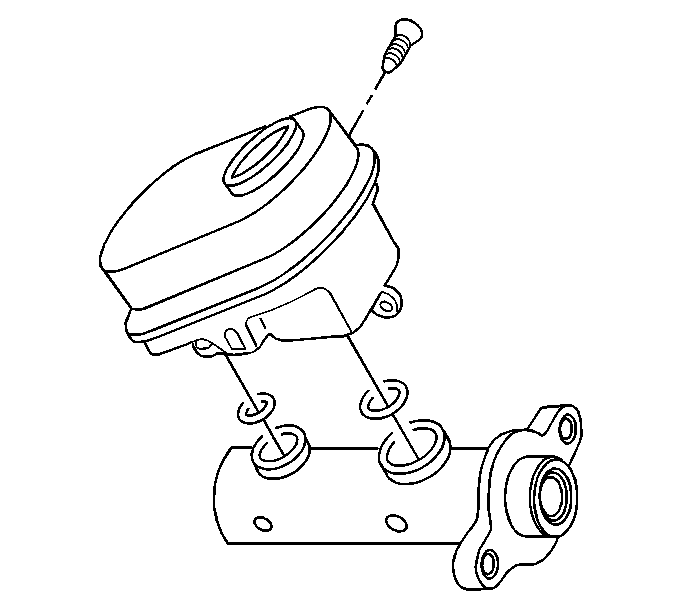Removal Procedure
- Remove the master cylinder. Refer to Master Cylinder Replacement.
- Empty the master cylinder reservoir into a suitable container.
- Clamp the flange of the master cylinder body in a vise.
- Remove the fluid level sensor. Refer to Brake Fluid Level Indicator Switch Replacement .
- Remove the screw securing the master cylinder reservoir to the master cylinder body.
- Remove the master cylinder reservoir by pulling straight up and away from the master cylinder body.
- Remove the O-rings from the grooves on the master cylinder reservoir. Discard the O-rings.

Notice: Do not clamp on the master cylinder body. Doing so may damage the master cylinder.
Installation Procedure
- Lubricate the new O-rings with clean brake fluid.
- Lubricate the reservoir flanges with clean brake fluid.
- Install the new O-rings into the grooves on the master cylinder reservoir. Ensure that the O-rings are properly seated.
- Install the master cylinder reservoir by pressing the reservoir straight down into the master cylinder body.
- Install the screw (3) securing the master cylinder reservoir to the master cylinder body.
- Install the fluid level sensor. Refer to Brake Fluid Level Indicator Switch Replacement .
- Install the master cylinder. Refer to Master Cylinder Replacement.

Notice: Use the correct fastener in the correct location. Replacement fasteners must be the correct part number for that application. Fasteners requiring replacement or fasteners requiring the use of thread locking compound or sealant are identified in the service procedure. Do not use paints, lubricants, or corrosion inhibitors on fasteners or fastener joint surfaces unless specified. These coatings affect fastener torque and joint clamping force and may damage the fastener. Use the correct tightening sequence and specifications when installing fasteners in order to avoid damage to parts and systems.
Tighten
Tighten the screw to 2 N·m (18 lb in).
